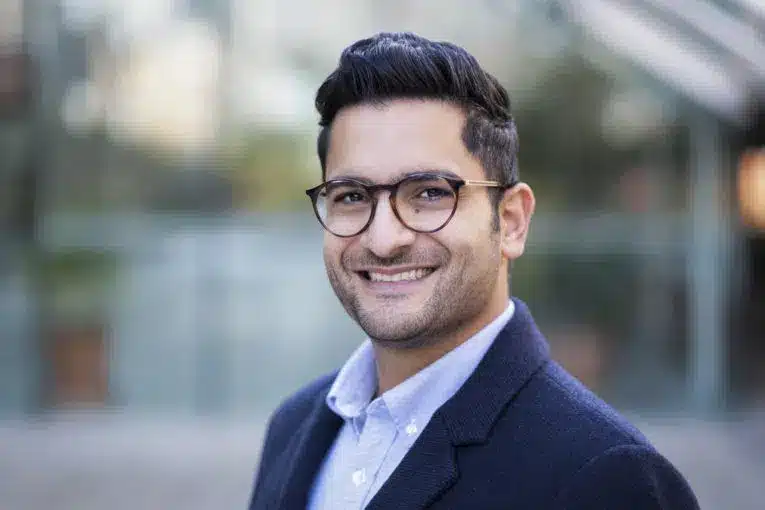Quality headshots for LinkedIn are one of the most important components for a profile and the first thing anyone will see. So there should only be one reason not to choose a professional photographer: because you simply can’t afford it. Consider the revenue lost by not having a professional portrait worthy of you.
I spend 80% of my career capturing headshots for LinkedIn for business people who want portraits for branding. The following are five lessons I have learned after capturing thousands of headshots.
1. Have an Engaging Headshot

Engaging is the most important component for successful headshots for LinkedIn. Sometimes, clients believe that they can look at another portrait of someone else and simply pretend to look like that particular individual.
My experience has taught me to capture the original energy of each person, uniquely. Yousuf Karsh is a great example of a photographer who would listen to his clients in a unique way to reveal the heart and soul of his clients.
While some photographer’s with greater accolades than me teach nonsense such as squinching (in between a squint and a regular look) or to photograph people like objects, I recommend anyone looking for a great headshots for LinkedIn choose a photographer that has images of people looking individualistically different and uniquely engaging. Find a photographer with outstanding people skill with a resume that includes images of everyone; young, old, thin, overweight, black or white. Find someone who is passionate about people.
2. Proper File Size
It bewilders me that the ultimate headshots for LinkedIn and other social media sites require such small file sizes and cropping. Nonetheless, the optimum crop for LinkedIn is somewhere between 400×400 pixels to 800×800 pixels (as long as the image is square).
Nowadays LinkedIn will accept images as large as 7680×4320 pixels. Just make sure to crop any rectangular images properly so you’re not cutting any important features out. Having the proper file size helps to produce a seamless experience improving optimization.
3. Layout and design

The layout that works best for headshots for LinkedIn is different than what many have learned in mainstream photography school. “Add a little of background, not too much and make sure the eyes are vivid, bright and revealing.” This may not make sense but continue reading. Unlike a portrait designed to be hung on your wall, a LinkedIn profile image is designed to stand out as a small image that is a tenth the size of a computer screen. For that reason we will compromise a lot of the background and may even crop out parts of the hands, shoulders or even the head: all items that used to be essential for a traditional portrait. Making sure your eyes are placed on a third quadrant, rather than centered helps the image more pleasing to the eye on LinkedIn. If possible we try to have a minimum amount of colours that include one complimentary color.
4. Take it seriously!
I once photographed a very successful entrepreneur, a billionaire. His slew of assistants kept calling me to make sure we were prepared to photograph him. One assistant was surprised to hear that I wanted to spend two hours photographing him, and tole me I would be lucky to have 15 minutes. When my client arrived I explained our process for capturing a portrait that includes his heart and soul. Portrait subjects need to open up a little to their photographers, and it can take longer than 15 minutes to trust a stranger enough to allow some emotion to shine through. He requested his staff not to disturb him for the next two hours.
Two hours might sound like a lot of time, but its a short amount of time if you consider that a LinkedIn headshot doesn’t sleep and is available 24hrs times 7 days a week for an average of two years. Next time you are in need of a branding portrait, consider that your desired results may depend on your intention.
5. Dress appropriately

Steve Jobs dressed appropriately to whom he was, not confined by traditional rules. He could do it because he proved himself so many times and developed such a respectable, larger than life reputation that others easily overlooked his non-traditional clothing choices. If you don’t have the reputation the likes of Steve Jobs, Elon Musk, James Dean , Hillary Clinton, Oprah Winfrey or Marilyn Monroe have – consider carefully what you are wearing. This includes your jewelry and makeup. Sometimes I find that clients who believe that they can’t photograph well will manifest this reality by bringing clothing stuffed in a bag, all crumpled up. Then they don’t trust my process, don’t open up and thus ensure that his or her negative belief is manifested.






